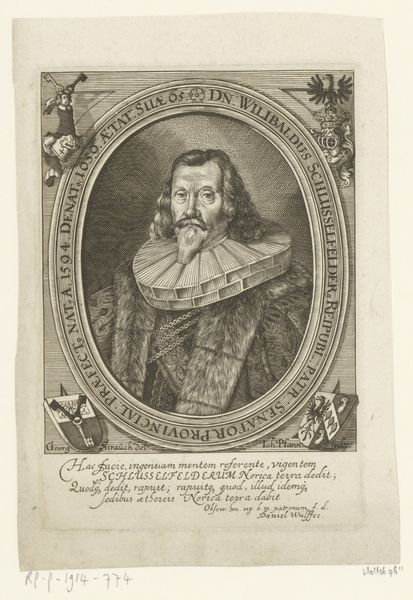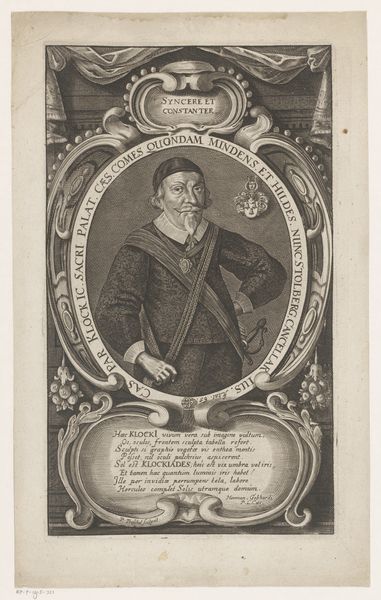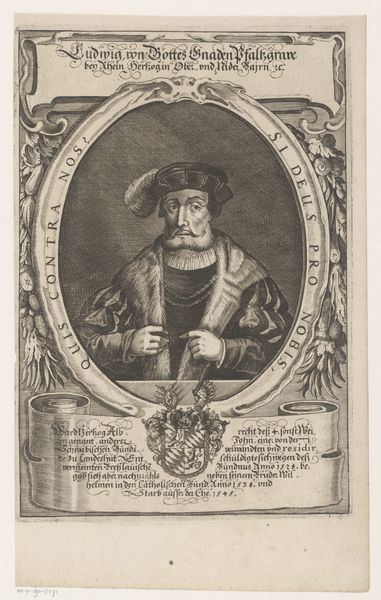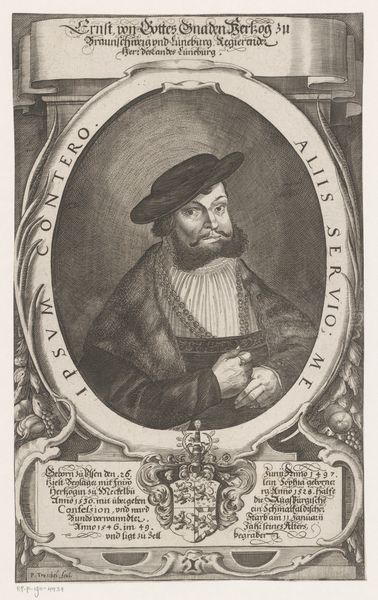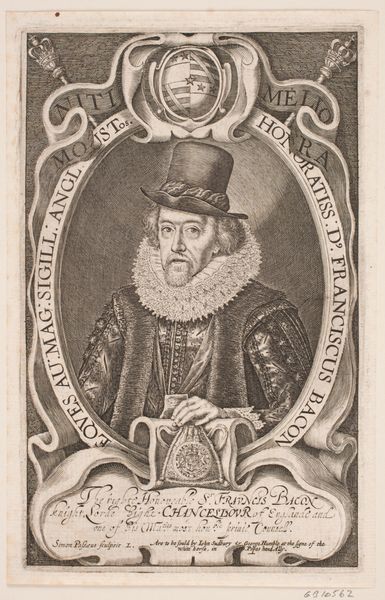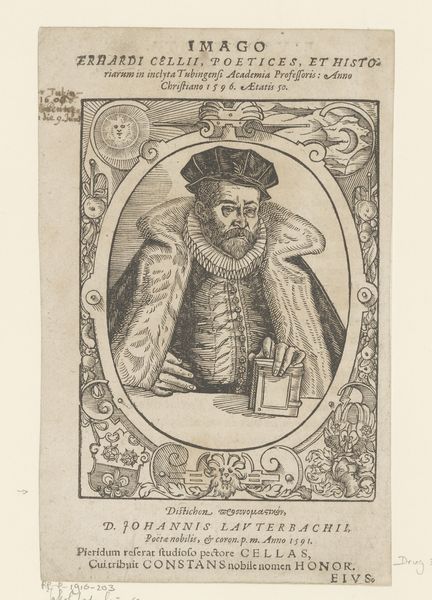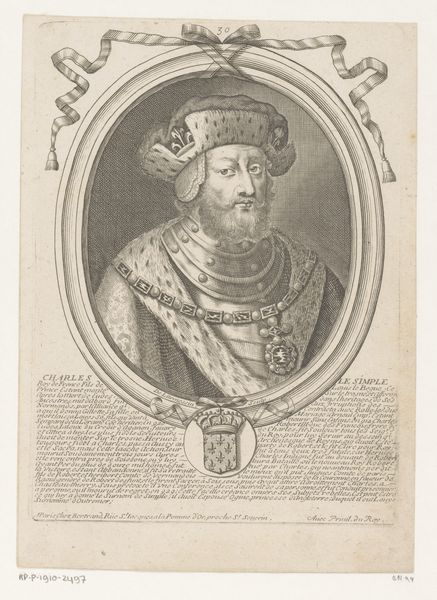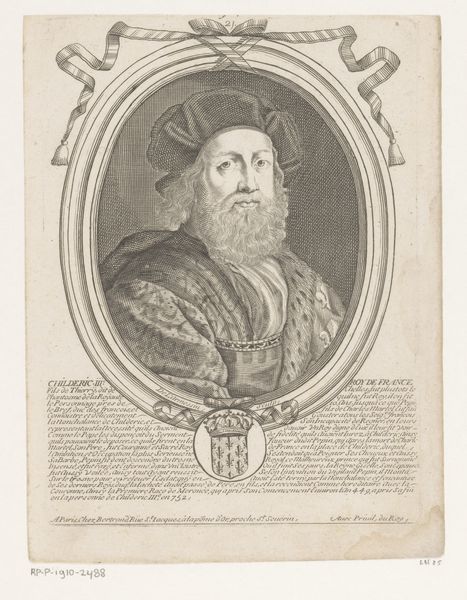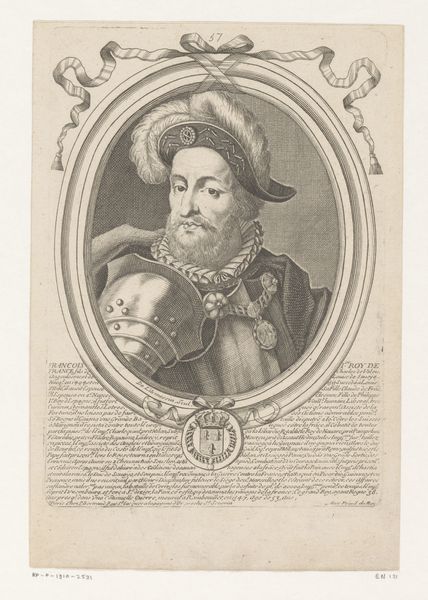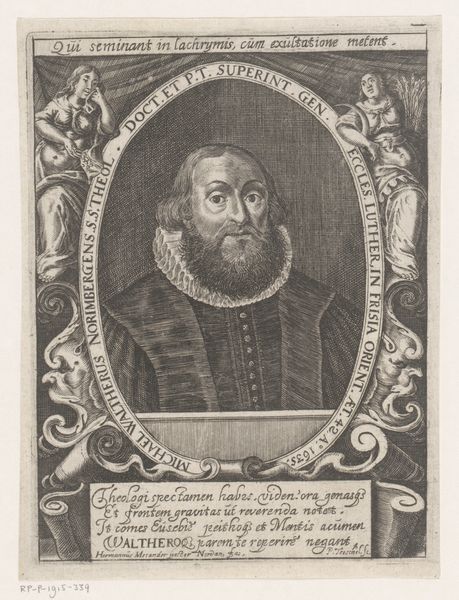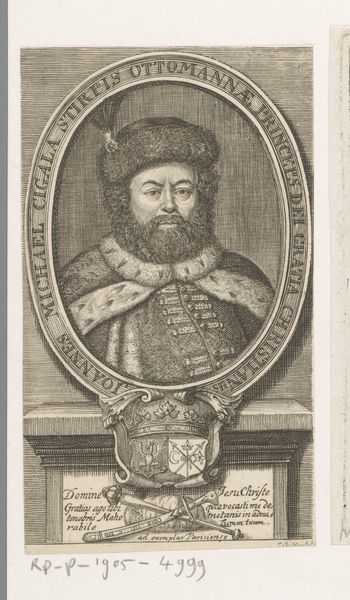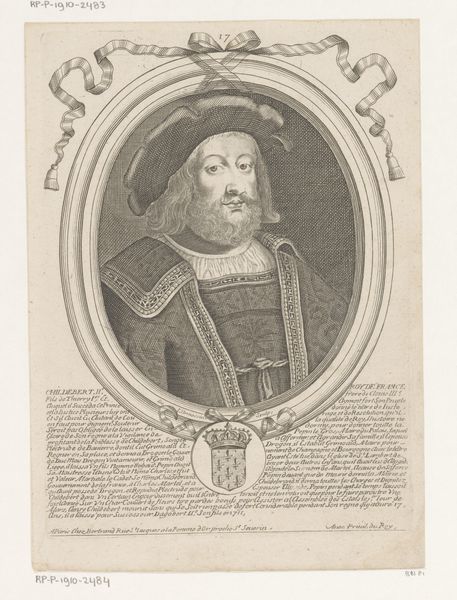
print, engraving
#
portrait
#
baroque
# print
#
old engraving style
#
history-painting
#
engraving
Dimensions: height 274 mm, width 177 mm
Copyright: Rijks Museum: Open Domain
Curator: Here we have Peter Troschel's "Portret van Wilhelm IV, Herzog von Bayern," an engraving created after 1630. Editor: Wow, talk about commanding! He's staring right through me, like he's about to dispense some very important, very serious advice…or maybe judge my fashion choices. Curator: Indeed. Portraits like this served to project power and lineage. Wilhelm IV was a significant figure, ruling Bavaria during a crucial period. This print would have circulated amongst the elite, reinforcing his image. Notice the details—the fur trim, the inscription. Editor: That fur looks incredibly soft; I want to reach out and touch it…almost gives him an air of approachability despite that intense stare. But then the framing...is that a motto circling him? “Quis contra nos, si Deus nobiscum"? “Who can be against us if God is with us?” Definitely not someone to cross! It's a baroque power pose. Curator: Precisely! The text is central to its function. It declares divine right, political legitimacy, it connects him to a historical narrative. Engravings like this offered wider distribution than painted portraits. Think of it as early PR. Editor: Ah, the Renaissance version of a carefully curated Instagram feed! Makes you wonder what Wilhelm IV would make of selfies… Actually, this print does share something with selfies: control over one's image. It's about presenting a very specific version of yourself to the world. The guy got his angles! And look at that coat of arms at the bottom; very extra, isn't it? Curator: That's representative of his familial line, cementing his place in history, which is central to Baroque portraiture. Troschel successfully creates a symbolic narrative using visual codes understood by contemporaries. The purpose transcends mere physical resemblance. Editor: Thinking about its modern significance, the print reminds me of power structures. Who creates these narratives, and what do they stand for? It's something that is happening every day, on a personal and even societal level. I like how art can show the way we still build these types of frameworks. Curator: Well said! It speaks to the enduring legacy of portraiture, whether painted or digitally produced today. Editor: Precisely. Thank you for these great observations.
Comments
No comments
Be the first to comment and join the conversation on the ultimate creative platform.
